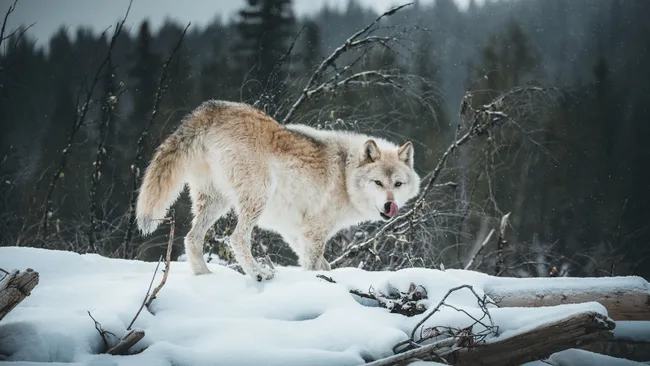Competing theories explain how dogs came to be domesticated from wolves. Now, a new study adds further support to the idea that they domesticated themselves.
Scientists remain uncertain about the exact process through which wolves evolved into domesticated dogs. However, a new study suggests that wolves may have domesticated themselves by choosing to live alongside humans in exchange for a steady food supply. Over time, these wolves likely selected mates with similar temperaments, reinforcing the process.
While this theory isn’t new, the latest research provides statistical evidence that natural selection alone could have driven the transformation of wolves into early dogs.
Archaeological and genetic findings indicate that dogs (Canis familiaris) descended from gray wolves (Canis lupus) and underwent domestication in two key phases. The first, occurring between 30,000 and 15,000 years ago, marked the transition from wild wolves to early domesticated dogs. The second phase, starting around 15,000 years ago, led to the development of distinct dog breeds, largely driven by human-led artificial selection.
During this later period, humans actively bred the tamest wolves for companionship and hunting, shaping the domestic dogs we know today. However, the factors driving the initial domestication phase remain debated. One leading hypothesis suggests wolves underwent “self-domestication”: those that scavenged near human settlements gradually became more accustomed to people. These more tolerant wolves prioritized a reliable food source over the unpredictability of the wild, giving rise to early domestic dogs.
A similar process is believed to have occurred with cats. Research suggests that wildcats began frequenting farming communities around 10,000 years ago, drawn by an abundance of rodents, which ultimately led to a mutually beneficial relationship with humans.
The Debate on Dog Domestication
The self-domestication hypothesis has long been questioned, particularly regarding the timeframe. Critics argue that natural selection alone might not have acted quickly enough to transform wild wolves into domestic dogs within just a few thousand years, without human intervention.
To address this, researchers developed a statistical model that simulates potential domestication timelines while allowing wolves to make their own choices regarding habitat and mate selection.
The model revealed that, over a span of 15,000 years, self-domestication through natural selection was indeed possible—but only under two conditions. First, wolves had to choose to remain near humans for a steady food supply. Second, they had to prefer mates with similar levels of tameness.
“When females were selecting mates, they also had to choose males with a similar temperament,” said study co-author Alex Capaldi, a mathematician and statistician at James Madison University. “If both of these processes were in play, self-domestication could have progressed quickly enough to counter the usual time constraints.”
While the study doesn’t prove exactly how wolves became domesticated, it provides strong evidence that self-domestication was a viable pathway.
Dogs were the first animals to be domesticated, making their evolutionary history crucial to understanding domestication in other species. Since their domestication was closely intertwined with early human societies—helping to herd cattle and migrating alongside humans—their history sheds light on how humans evolved to communicate and form bonds with animals.
